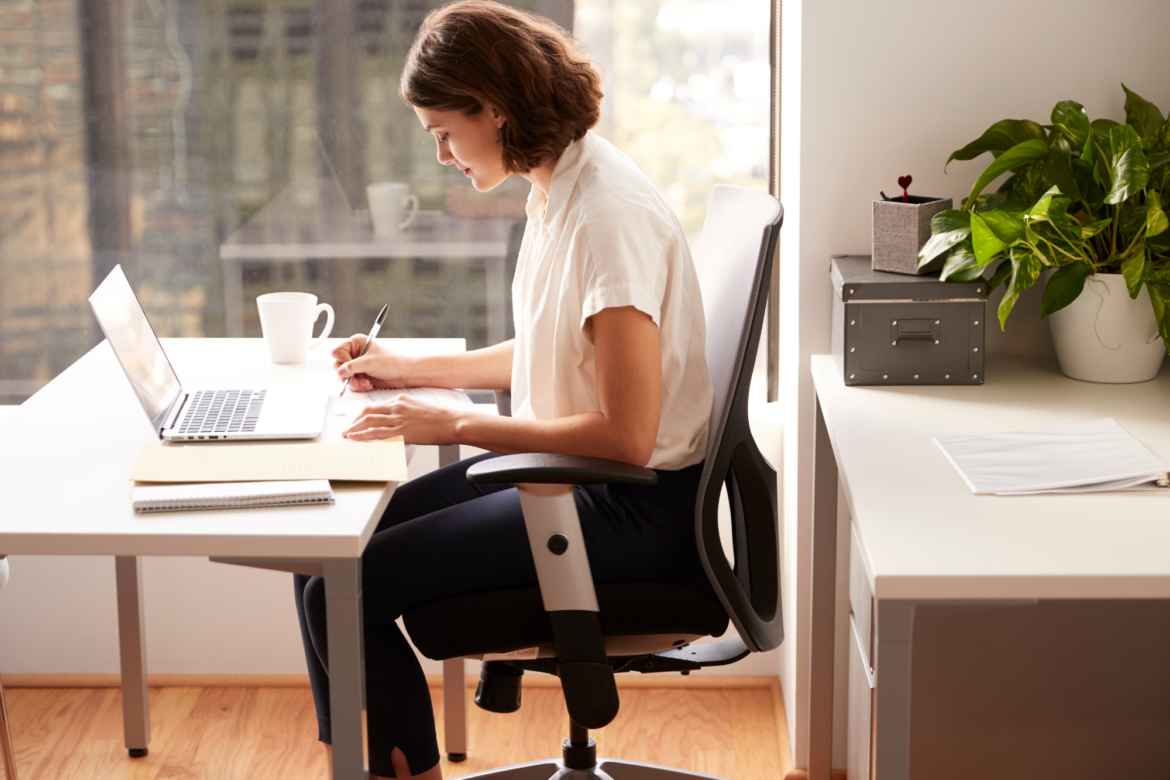Working from Home: Ergonomics
The number of individuals working from home over the past three years has increased exponentially. Not everyone is equipped with an ergonomically effective home office. Physical Therapists have seen an increase in issues involving but not limited to the hip, low back, and neck. Here are tips for an ergonomic workstation and at-your-desk stretches to promote good posture and reduce injury risk. Learn more about the ergonomics of working from home.
Neck and upper body ergonomics
For proper neck and shoulder alignment, make sure the top of your screen is at eye height to minimize strain on the cervical and thoracic spine and myofascial attachments. The repetitiveness of having the screen too low will cause increased flexion throughout the neck and upper back and will encourage poor posture. The height of the desk/keyboard and armrests should allow the shoulders to be relaxed and not elevated. The elbow should be bent to around 90 degrees and in alignment with the torso. Another tip is to try to avoid resting your wrist directly on supports to reduce contact pressure and stress. If support is needed, allow your palm to rest instead.
Mid to Low back ergonomics
Ideally, you will have a chair to support your mid and low back. If you do not have a chair that provides lumbar support and you notice you are tending to slump/bent forward, add a small pillow or rolled-up towel behind the low back. This gives additional lumbar support and a tactile cue may be beneficial. Often our posture becomes too relaxed as we work and we sit with shoulders forwardly rotated or flexed at the waist contributing to strain throughout the mid and low back as well as neck.
Hips to ankle ergonomics
The chair height should allow for the hips and knees to be around a 90-110 degree angle. Feet should be flat on the floor or if needed, an additional footrest can be used. Additional tip: Avoid crossing your legs or tucking on your leg underneath your hip. This can affect alignment and will increase the risk of injury over time.
A few stretches to include at your workstation
•Pectoralis/shoulder stretch
Sitting up tall at your desk, clasp your hands behind your back and squeeze your shoulder blades together and you should feel a stretch throughout the front of your shoulder and chest area.
•Torso/trunk rotation stretch
Cross one leg over the other and rotate your torso in the opposite direction. Use the back and seat of the chair as needed to help push further into the stretch. This stretch can be done without the legs crossed to decrease intensity.
•Seated figure four stretch
Cross one ankle onto the opposite knee and hinge forward at the waist until you feel a stretch into the hip and gluteal area.
•Seated hamstring stretch
Sit up tall, extend one knee (have a slight bend, do not fully extend), and hinge forward at the hips until you feel a stretch down the back of your leg.
•Upper trapezius stretch for neck
To stretch the left side: sit up tall and reach your right hand over the top of your head to the opposite side. Gently pull so your right ear moves towards the right shoulder. A stretch should be felt along the left side of the neck. *You would do the opposite to stretch the right side.
If you or someone you know is experiencing pain that could be connected to a workstation issue, physical therapy can help! Physical Therapists can determine what may be causing the pain, and give exercises or recommendations to your workstation.

